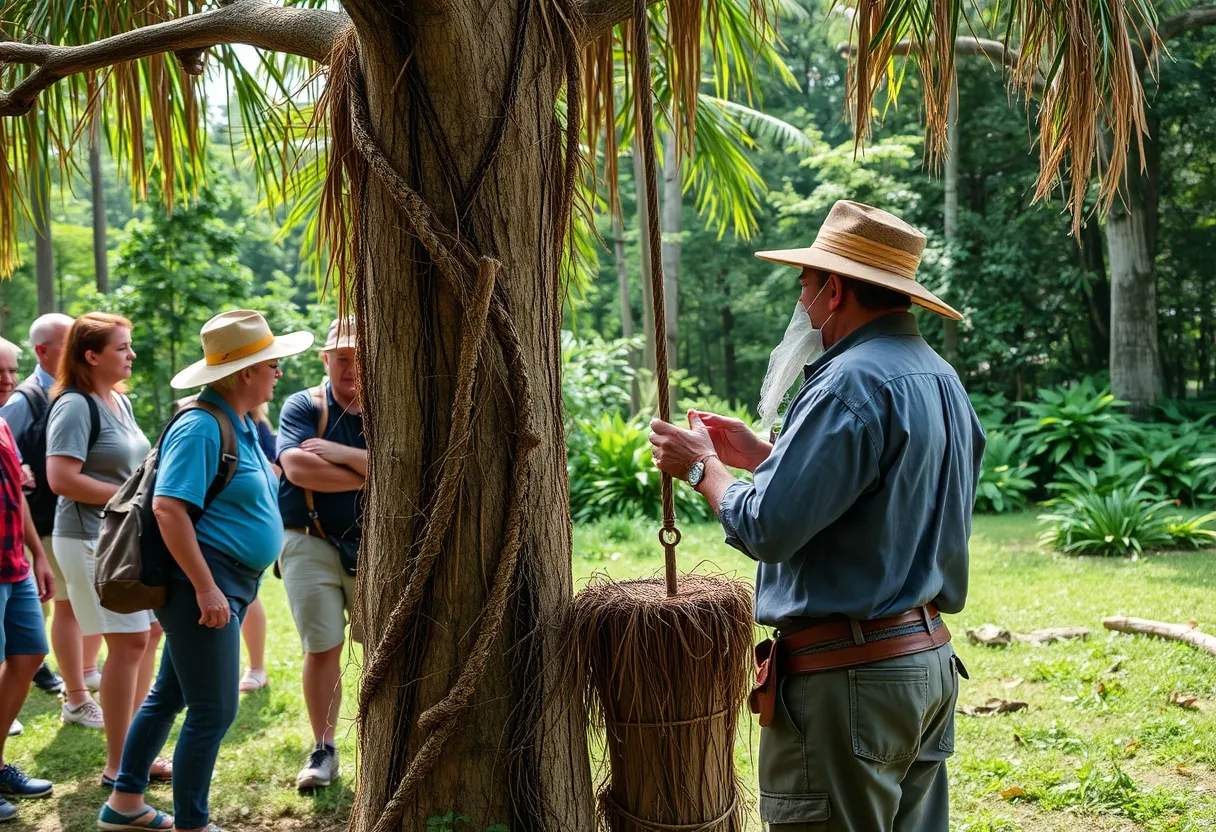
Kerala’s Liquid Gold
Liquid Gold Kerala’s rustic charm turns full circle with toddy tapping. Among the many unique
When you travel to the scenic backwaters of Alappuzha, also known as Alleppey, you are treated to more than just houseboat cruises and lush paddy fields. Among the cultural treasures of this region, one experience stands apart — watching a live Kathakali performance. With its vivid costumes, striking facial makeup, and powerful storytelling, Kathakali is not just a dance form but a centuries-old tradition that captures the heart of Kerala’s artistic heritage and is one of the best among Kerala art forms.
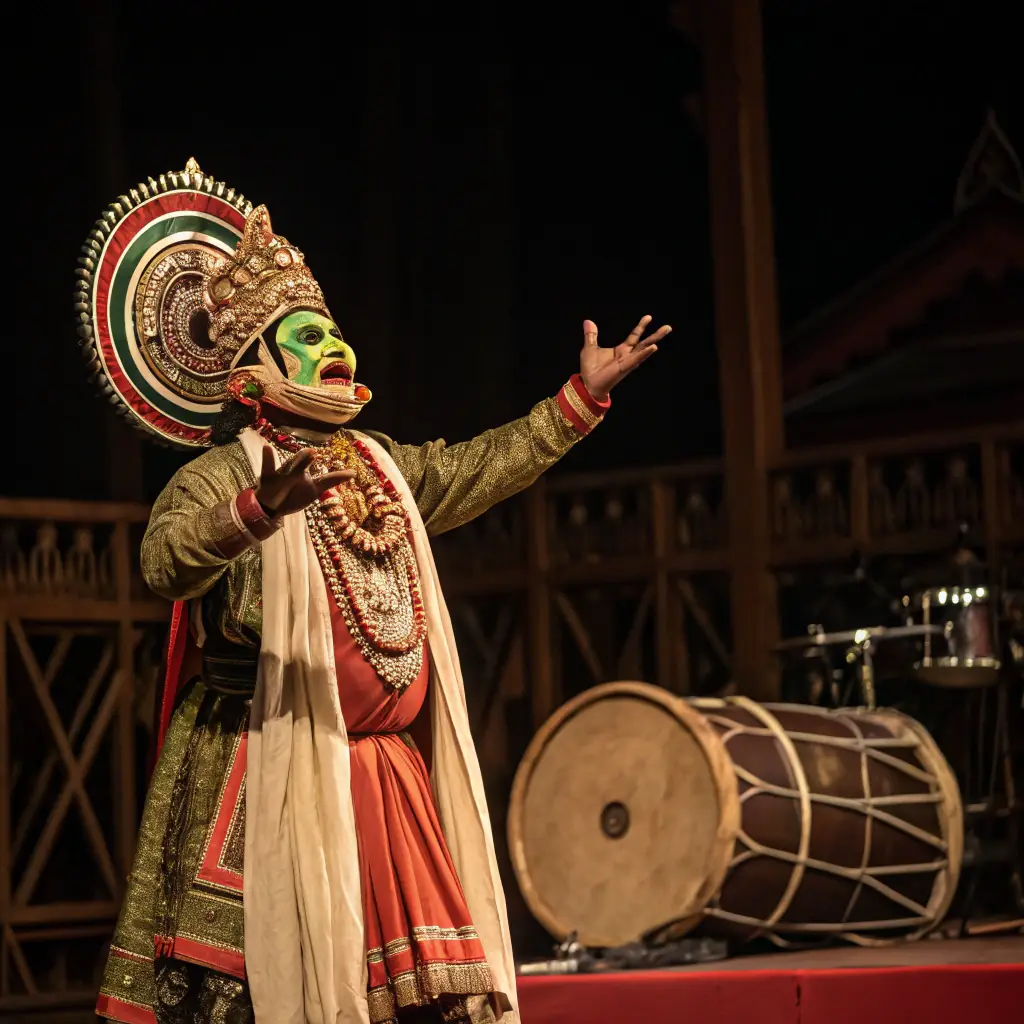
A classical dance-drama that spread its roots in Kerala over 300 years ago, Kathakali is an extravaganza of dance, music, elaborate costumes, and facial expressions (known as ‘navarasas’) — all of which combine effortlessly to bring to life narratives from Indian epics like the Mahabharata and Ramayana.
Unlike most dance forms, Kathakali is performed predominantly by male artists, even in female roles, and involves meticulous training in physical movement, facial expressions, and hand gestures (mudras). Performances are accompanied by live musicians, drummers (chenda and maddalam), and vocalists, creating a powerful, immersive atmosphere.
Each character’s makeup is symbolic — green for noble heroes, red or black for demons and villains, yellow for ascetics and women. The transformation process itself is an experience, often open for audiences to witness before the show begins.
Kathakali has its origins deeply ingrained in the cultural and religious traditions of Kerala’s temple arts. It emerged in the 17th century, evolving from earlier art forms like Krishnanattam (a dance-drama based on the life of Krishna) and Koodiyattam (a Sanskrit theatre tradition). The word Kathakali means “story-play”—a fitting name for an art that seamlessly blends storytelling with dance and drama.

The dance form was originally performed in temple courtyards, often overnight, as a sacred offering to the gods. It was deeply connected to religious festivals and spiritual life, and access was once limited to higher castes and devout communities.
Today, Kathakali has transformed from a ritualistic art to a globally admired performance tradition, showcased not just in temples but in theatres, cultural festivals, and international art venues. Yet, its soul has found its happy place within Kerala’s devotional and artistic legacy.
Kathakali is deeply rooted in Kerala’s cultural identity, and there’s no better place to witness its authenticity than in the land of its origin. Watching a Kathakali performance in Kerala offers:
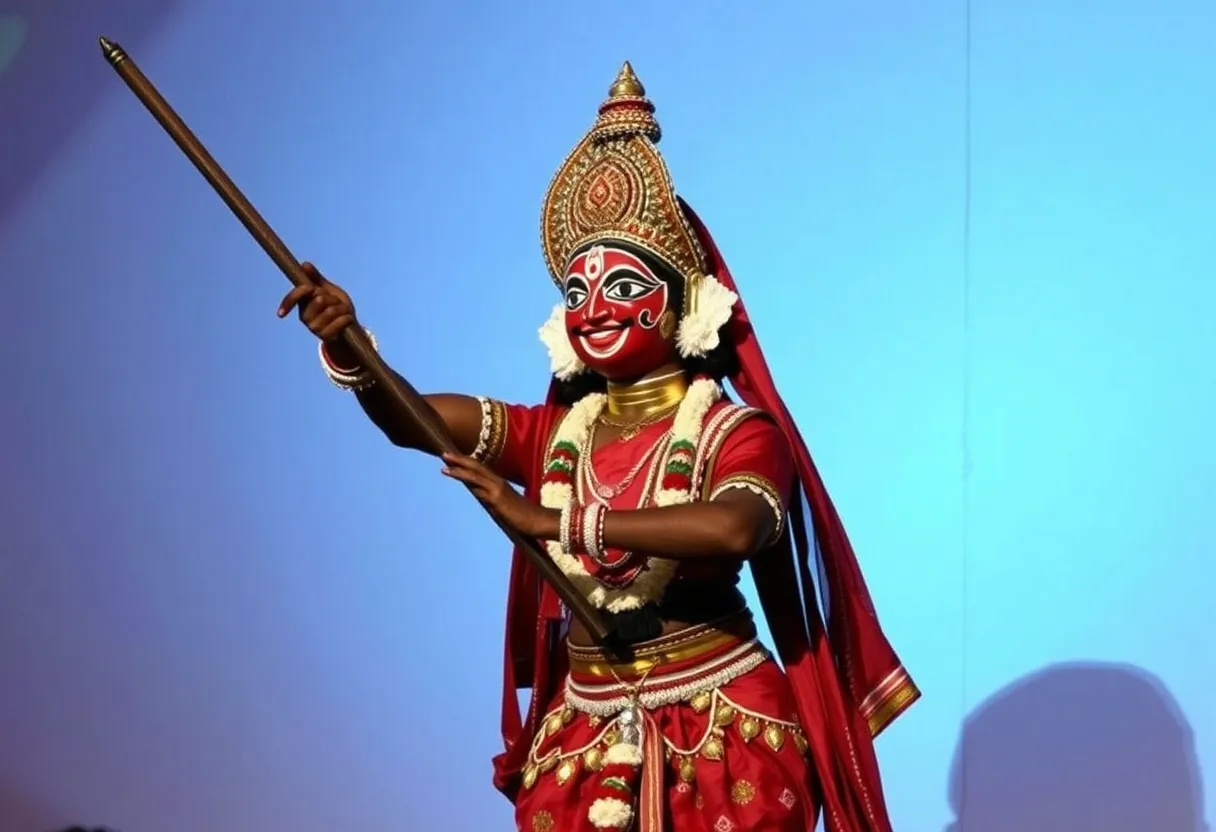
For travelers interested in culture, history, or the performing arts, a Kathakali show is not just entertainment — it is an essential, transformative experience that is the high point of Kerala classical dance.
Alappuzha has a few intimate venues where visitors can enjoy the best Kathakali performances that represent traditional theater Kerala. We list them below:
1. Kerala Kathakali Centre (Near Alappuzha Beach)
While the main centre is in Kochi, Alappuzha also has smaller associated venues or traveling troupes that perform here. Some shows are hosted seasonally or during festival times. You should check listings in local magazines or newspapers, or ask at the reception desk of your hotel.
Highlights: For an authentic experience, make time to watch the makeup demonstration before the start of the performance.
Tip: Advance booking is a must, especially during the tourist season, which runs from October to March.
2. Revi Karunakaran Memorial Museum
Though primarily an art and history museum, the Revi Karunakaran Memorial occasionally hosts classical performances, including the best Kathakali performances, during special events or curated evenings.
Highlights: A cultural evening that includes art, history, and performance.
Tip: Call ahead to check performance schedules.
3. Sree Krishna Swamy Temple, Ambalappuzha
During temple festivals and annual celebrations, the best Kathakali performances are organized in the courtyard of the temple. The dancers perform late into the night, the atmosphere made divine by the glow of the oil lamps decking the entire courtyard.
Highlights: Feel the vibes of a spiritual ambiance, mix with the local crowd, and appreciate the nuances of a temple culture.
Tip: Visit during the Ambalappuzha Temple Festival (March-April) for a chance to experience live temple art forms.
4. Local Homestays and Cultural Programs
Alappuzha and nearby places have boutique homestays and eco-resorts that organize delightful evening performances centered around Kathakali, Mohiniyattam, and other Kerala art forms. These are shorter, tourist-friendly cultural experiences in Alappuzha that are ideal for travelers on tight itineraries.
Highlights: Intimate setting, opportunity to interact with performers.
Tip: Ask your host if they can arrange a private or group performance.
A very interesting aspect of Kathakali Kerala is the pre-show ritual of makeup and costume. Known as ‘Chutti Kuthal’, the makeup process Kathakali takes 3–4 hours, during which performers transform into gods, demons, and celestial beings. The makeup process is elaborate and requires utmost discipline and patience.
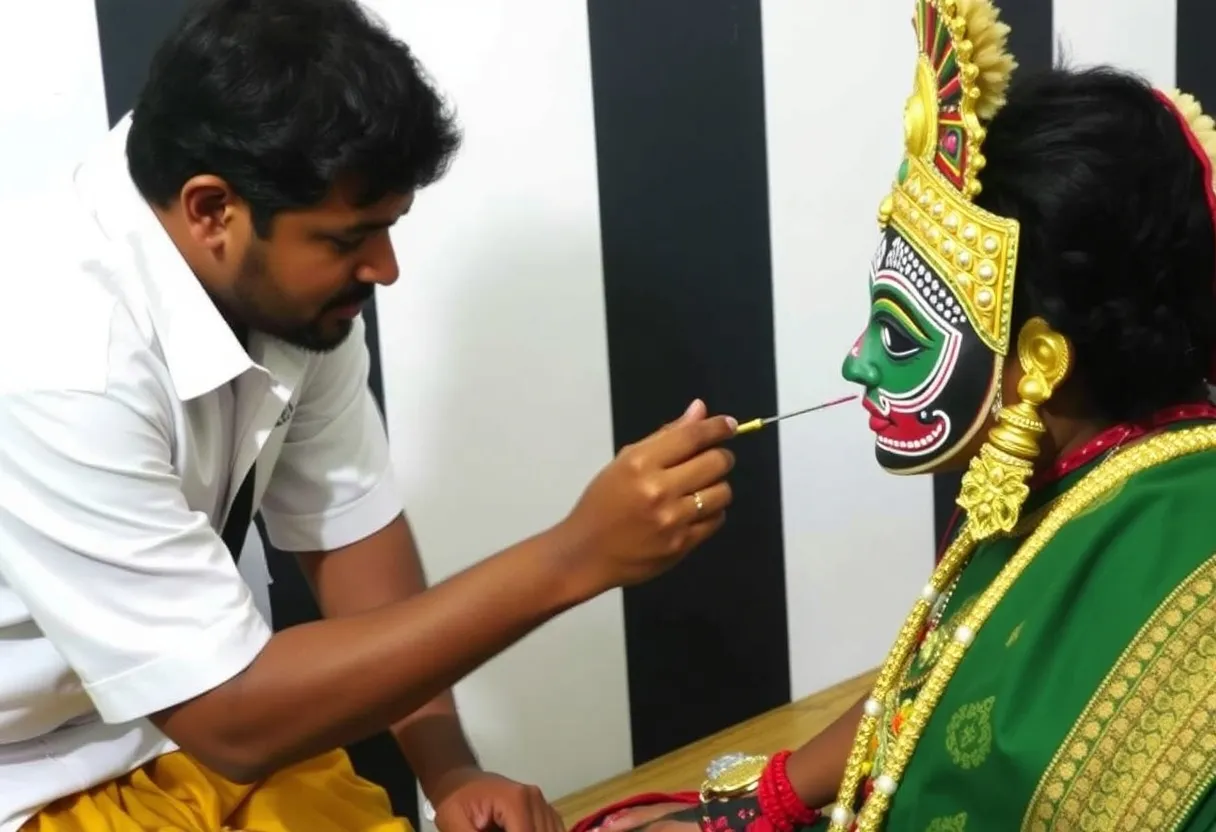
Each stroke of color on the face has a specific meaning, indicating the character’s nature:
Green (Pacha): The green color symbolizes noble heroes and divine characters.
Red (Tati): Signifies evil and aggression.
Black (Kari): Denotes forest dwellers or hunters, often fierce.
Yellow (Minukku): This color speaks of the gentleness and spirituality of women and sages.
Beards (White, Red, or Black): Add layers to the character’s persona.
The makeup is made from natural pigments — rice paste, coconut oil, and minerals — carefully applied with thin sticks and brushes. After the painting of the face has been completed, the performers dress in towering wooden headdresses, elaborately layered costumes, and embellished jewelry. Their appearance becomes larger than life, transforming the human into mythic. This is the role that traditional music and costumes in Kathakali play in Kathakali, along with the makeup.
Visitors to Kathakali shows in Alappuzha often have the unique opportunity to watch this preparation live, before the actual performance begins. It’s a spellbinding experience, revealing the amount of discipline, patience, and artistry that goes into a single role.
This ritual not only enhances the drama but bridges the actor with the divine, reminding audiences that Kathakali is more than entertainment — it is sacred theatre.
Kathakali is not just a dance; it is a living narrative painted in color, expression, and rhythm. Watching it in Alappuzha, with the sounds of drums reverberating through the air and the scent of jasmine lingering, is a soulful experience that stays with you long after your journey ends. Don’t leave Kerala without immersing yourself in this timeless spectacle.

Liquid Gold Kerala’s rustic charm turns full circle with toddy tapping. Among the many unique

Discover in Kerala Ayurveda, which translates to “knowledge of life” in Sanskrit, has been an
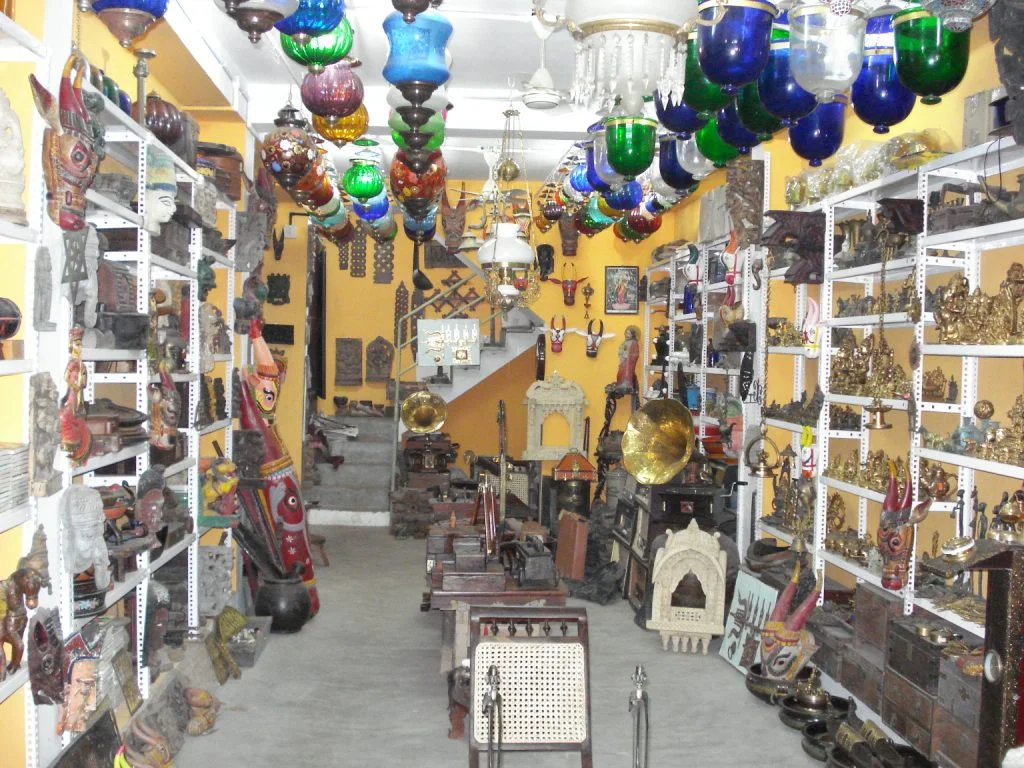
Shopping in An Adventure Awaits (2024) Shopping in Alleppey is more than just a pastime—it’s
Beachfront Bliss in Kerala
Discover Akoya Beach Villa, Alleppey